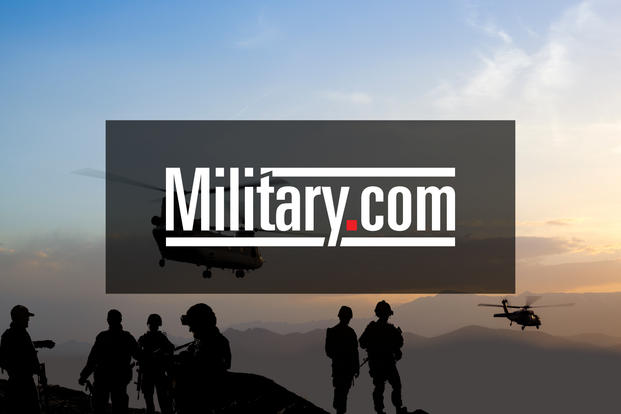The Consolidated and Further Continuing Appropriations Act (HR 933), which passed the House Thursday and was sent on to the president, will fund the government through Sept. 30. It also will bring some immediate budget relief to the Department of Defense and will protect critical programs at several other federal departments.
Automatic budget cuts under the 2011 Budget Control Act sequester mechanism remain in effect. For Defense, it means funding cuts of $43 billion through September, which still will force the furlough for up to 22 days of almost 800,000 defense civilian employees and will squeeze many military family programs including commissary operations.
But passage of HR 933 will ease fiscal headaches for the military in two ways. One, it contains a new appropriations bill for defense and military construction. Two, it eases sequestration’s bite on training and readiness by shifting $10 billion from other defense accounts into operations and maintenance where cuts are felt more acutely by members, units and bases.
Hours before the Senate vote, Sens. Kay Hagan (D-N.C.) and Jim Inhofe, ranking Republican on the Senate Armed Services Committee, won support for an amendment directing the services to use some of that $10 billion to restore tuition assistance. It bars the services from reducing tuition budgets for this year by more than the 7.8 percent drop in operations and maintenance caused by sequestration.
It’s not yet clear if the services will bother to trim tuition programs so finely this year. But Congress wants these programs restarted soon.
Navy alone did not suspend tuition assistance this month. The Coast Guard did, but the Hagan-Inhofe amendment probably doesn’t apply directly to the Coast Guard, an agency of the Department of Homeland Security.
"This is something I have talked to our troops about," said Inhofe. "Many of them were so alarmed to even suggest [the services] would take away the very thing that caused them to enlist in the first place."
"We had over 300,000 service members [who] utilized this tuition benefit assistance last year," Hagan told Senate colleagues. "And over 50,000 of them received diplomas, certificates and licenses."
An Army National Guardsmen from North Carolina, who asked not to be identified, said tuition assistance was a key enticement to enter service, which quickly led to a year of convoy patrols in Iraq. Now he’s a full time college student, with a version of the GI Bill that doesn’t cover all of his education costs. So he has relied on tuition assistance steadily since 2010.
"This definitely was a shocker," he said of Army’s decision in early March to suspend the program. "It is one of the last things I thought they would touch, the education of American veterans."
Bipartisanship in passing HR 933 provides a brief respite from political gamesmanship over budgets. Automatic cuts of sequestration, along with continuing resolutions in place of normal budgets, have shaken the Defense Department. But the man-made crisis also has allowed the armed forces to impose cost controls on programs with spend rates that threatened other priorities. One of the troublesome programs has been tuition assistance.
Until the war in Afghanistan, military personnel using tuition assistance paid 25 percent of costs out of pocket and the military paid 75 percent. Since 2002, the services have paid 100 percent and later raised the annual cap on total payments for individual users to $4500.
By 2011, program costs had more than tripled, from $152 million to $563 million, creating a boom for online education programs catering to the military. More than half of total tuition aid dollars goes to for-profit schools.
With budgets in decline, the military services already had been eyeing cuts in tuition assistance. The extraordinary strain this year on operations and maintenance money made suspending the benefit seem a necessity.
Service leaders noted that Congress enacted a robust Post-9/11 GI Bill benefit in 2009, and there are other education aid options too. Some states, for example, offer their own tuition assistance plans for Guardsmen.
In testimony last week, service personnel chiefs hinted, perhaps prematurely now, that the heyday of tuition assistance might be over.
"We're going to re-evaluate it for fiscal 2014," said Lt. Gen. Darrell Jones, Air Force deputy chief of staff for manpower, personnel and services. "We're going to do everything we can to offer a program…but realistically, we're going to have to reduce the parameters [to] lessen the budgetary impact on our Air Force."
Lt. Gen. Howard B. Bromberg, Army’s deputy chief of staff, told the same House subcommittee that tuition assistance has "been a very good program for many, many years." But Army, he said, could cut $115 million, or 30 percent, from its tuition aid budget of $383 million.
"Soldiers have become very reliant on the program," Bromberg said. So its suspension "is a big culture change for the force. But in these times," he added before a congressman’s own statement cut him off.
Coincidently, one day before the Senate approved the Hagan-Inhofe amendment directing that a scalpel, not a hatchet, be used to trim tuition aid, Robert Hale, the Defense Department comptroller, urged Congress to stop rescuing programs that need to be to cut. Besides obsolete or too costly weapon programs, Hale criticized lawmakers for refusing to slow growth in military compensation using pay caps or TRICARE fee increases.
"Together, if these congressional actions are sustained, it will add billions to our costs over the next five years," Hale said, despite "the serious economic problems" that America faces.
The Hagan-Inhofe amendment again says: cut somewhere else.
To comment, write Military Update, P.O. Box 231111, Centreville, VA, or email milupdate@aol.comor twitter: Tom Philpott @Military_Update










